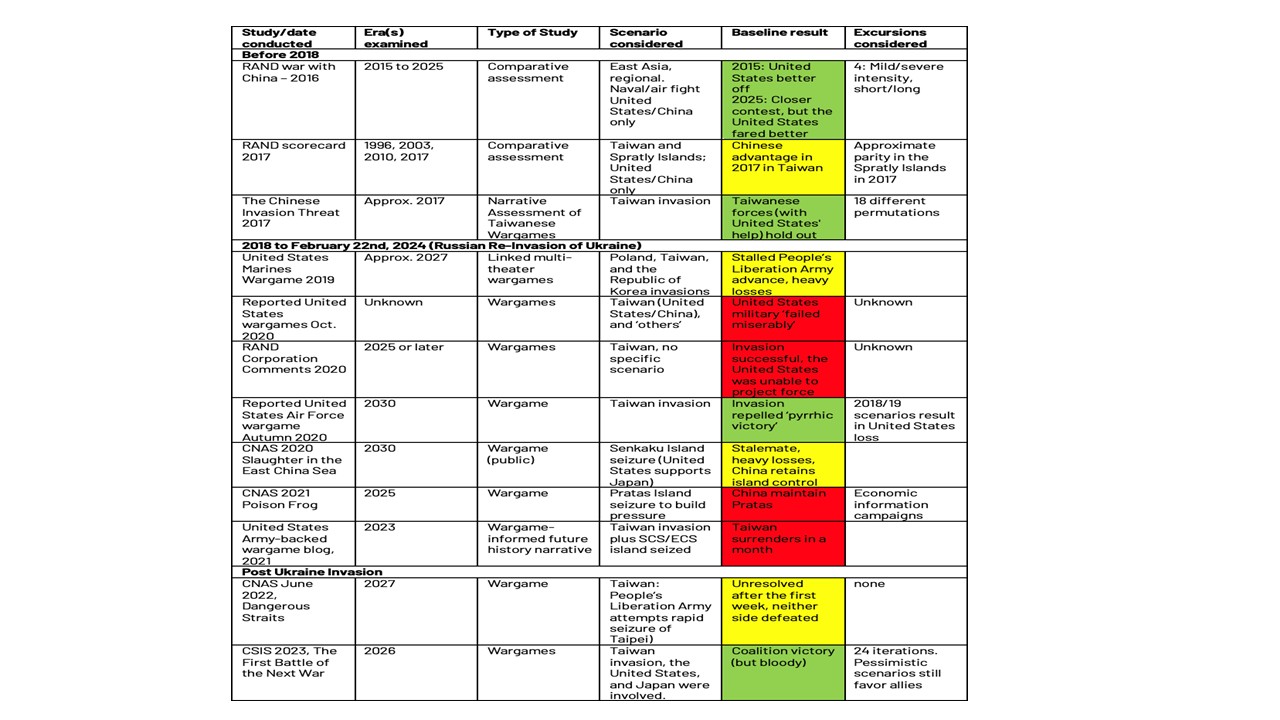Taiwan: Grey Warfare or More?
China grey warfare against Taiwan will continue, but we would only see a 5% probability of China invading Taiwan in 2025 and 2026. The U.S. is pivoting towards Asia and China, while President Trump is not China friendly. A war with the U.S. over Taiwan would be very costly in military and economic terms for all sides. We would attach a 20% probability of invasion in 2027 and 2028 due to the high risks, with the swing factor being President Trump’s attitude on the strategic ambiguity policy and whether President Xi could extract concessions from Trump on Taiwan.
Figure 1: Taiwan War Game Scenarios
Source: CIMSEC (here)
China has started a set of military exercises around Taiwan this week that include a blockade of the island, which is in line with the intermittent grey warfare that China has undertaken for years. China is trying to show strength; pressure Taiwan and remind the U.S. military of China’s growing capabilities. The previous assumption that the U.S./Taiwan would win a Taiwan war against China has been eroded by war games scenarios of the last few years (Figure 1). China’s new hypersonic missile capability means that the U.S. superiority in aircraft carriers may not be a game changer in a counterattack by the U.S. or a blockade of China by the U.S. The U.S. would then depend on military bases in Japan Okinawa islands, with uncertainty whether Japan would allow this in a scenario of a U.S./China war over Taiwan.
Though the military wargames suggest that a U.S./China war would have a very heavy cost for all involved, the key question is whether China would use the military option for Taiwan reunification. President Donald Trump has so far supported the strategic ambiguity policy if Taiwan were invaded, with the Washington Post this week suggesting a strident internal memo on how to combat a China invasion of Taiwan (here). However, Trump’s instincts are anti-war and an America first bias, which means that in a crunch that U.S. military counterattack could be delayed or Russia style economic sanctions on China are used instead.
China and President Xi need to understand the probability of the U.S. counterattacking if China were to invade Taiwan. Though China enjoys air and naval superiority against Taiwan alone, an invasion across the Taiwan straits would only occur if China could be confident of eventual success in taking all of Taiwan. This is high risk, but would be very high risk if the U.S. gets involved. If the U.S. become more neutral on Taiwan, then this could embolden China. For example, China could ask for President Trump’s blessing for reunification as part of a U.S./China trade deal. In this context, it is worth remembering that Putin asked Biden/NATO for withdrawal from eastern Europe and guarantees on Ukraine, three months before the invasion. For now we feel that China and President Xi will watch developments in Ukraine and see Trump’s decisions in the coming quarters. Military strategists also note that China capability may not be ready until 2027. Thus we would keep the probability of China invasion of Taiwan at 5% in 2025 and 2026. We would attach a 20% probability in 2027 and 2028, with the swing factor being President Trump’s attitude on the strategic ambiguity policy.
